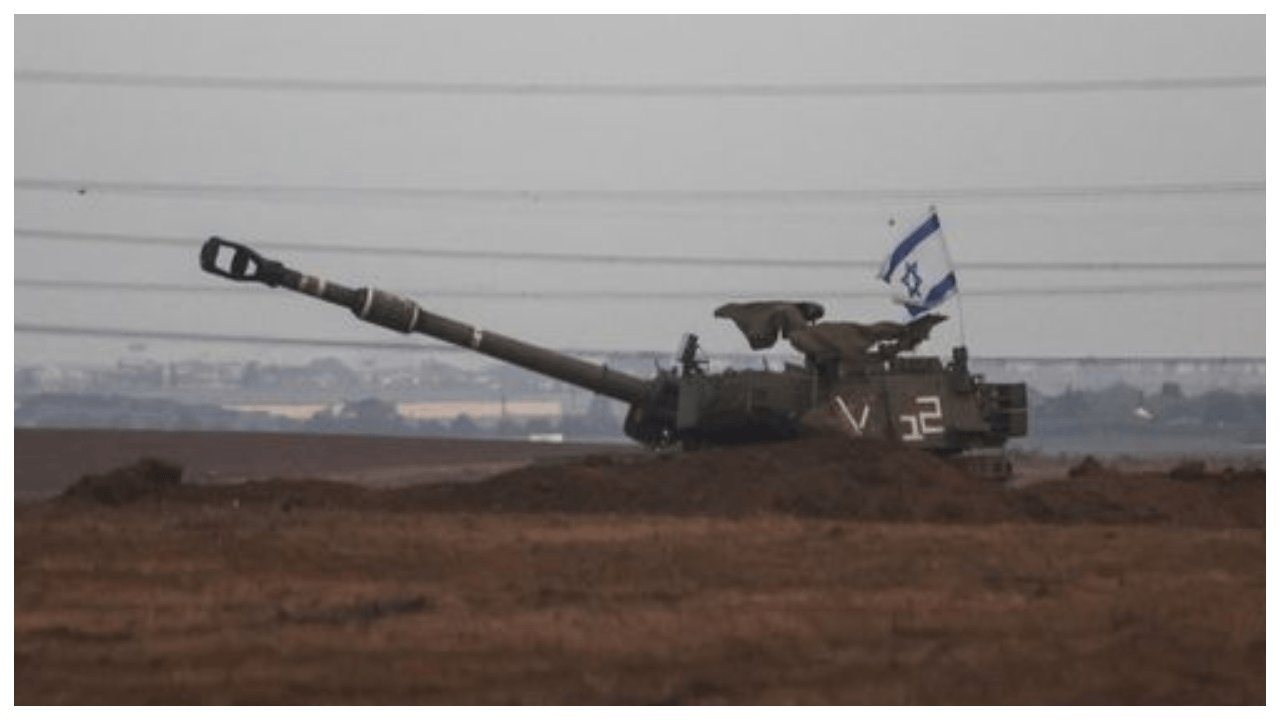‘Iron Sting‘ was first used on October 22, 2023, when the IDF fired several rounds at Hamas targets in the Gaza Strip. ‘Iron Sting’ is a 120 mm guided mortar developed by Elbit Systems of Israel. The IDF claimed that the ‘Iron Sting’ achieved “unprecedented accuracy” and “outstanding performance”. “Its operational use will revolutionise ground warfare and equip battalions with organic, accurate and effective firepower,” the IDF release said. The IDF also said that the ‘Iron Sting’ was a “game changer” in the war against Hamas, as it gave them a significant advantage over the enemy’s rocket and tunnel capabilities.
Here is all you need to know about ‘Iron Sting’:
Precision strikes
Traditional mortar rounds have a certain margin of error, which can lead to unintended civilian casualties or damage to infrastructure. With the precision-guided capability of ‘Iron Sting’, the IDF can target specific enemy positions or assets with a higher degree of accuracy. This can be particularly useful in densely populated areas like Gaza, where Hamas often operates.
Minimized collateral damage
One of the major challenges in the Israel-Hamas conflict is the potential for civilian casualties. Hamas has been known to operate within civilian areas, using them as shields. The precision of ‘Iron Sting’ can help reduce the risk of civilian casualties by ensuring that only the intended target is hit.
Cost-effective operations
Precision-guided munitions, while more expensive than traditional rounds, can be more cost-effective in the long run. This is because fewer rounds need to be fired to achieve the desired effect, reducing ammunition expenditure.
Deterrence factor
The introduction of a new, advanced weapon system can serve as a deterrent. Knowing that the IDF possesses a weapon that can strike with high accuracy might deter Hamas or other groups from taking certain actions or positioning their assets in specific locations.
Psychological impact
The knowledge that the enemy has a highly accurate weapon can have a psychological impact on opposing forces. It can reduce morale and create uncertainty, potentially affecting the operational decisions of Hamas.
Operational flexibility
The ability to strike with precision gives the IDF more flexibility in its operations. It can choose to target specific assets or commanders without causing widespread damage, allowing for more tailored military responses.
However, while ‘Iron Sting’ brings several advantages, it’s essential to understand that no weapon system can be a complete game-changer in a complex conflict like the Israel-Hamas war.
‘Iron Sting’ can potentially change the dynamics of specific military engagements in the Israel-Hamas conflict. However, while it can influence the tactical landscape, it is unlikely to be a singular solution to the broader conflict.
Meanwhile, following Hamas’ significant attack on October 7, Israeli forces have launched numerous air raids in both Gaza and the West Bank.
The conflict has resulted in the tragic loss of over 1,400 lives in Israel, with the majority being civilians killed during the Hamas assault. In Gaza, the death toll has surpassed 4,300, as reported by the health ministry governed by Hamas.
Although the Israeli Defense Forces (IDF) have indicated readiness for a possible ground incursion into Gaza, such an operation is yet to start.
(With inputs from agencies)
Here is all you need to know about ‘Iron Sting’:
Precision strikes
Traditional mortar rounds have a certain margin of error, which can lead to unintended civilian casualties or damage to infrastructure. With the precision-guided capability of ‘Iron Sting’, the IDF can target specific enemy positions or assets with a higher degree of accuracy. This can be particularly useful in densely populated areas like Gaza, where Hamas often operates.
Minimized collateral damage
One of the major challenges in the Israel-Hamas conflict is the potential for civilian casualties. Hamas has been known to operate within civilian areas, using them as shields. The precision of ‘Iron Sting’ can help reduce the risk of civilian casualties by ensuring that only the intended target is hit.
Cost-effective operations
Precision-guided munitions, while more expensive than traditional rounds, can be more cost-effective in the long run. This is because fewer rounds need to be fired to achieve the desired effect, reducing ammunition expenditure.
Deterrence factor
The introduction of a new, advanced weapon system can serve as a deterrent. Knowing that the IDF possesses a weapon that can strike with high accuracy might deter Hamas or other groups from taking certain actions or positioning their assets in specific locations.
Psychological impact
The knowledge that the enemy has a highly accurate weapon can have a psychological impact on opposing forces. It can reduce morale and create uncertainty, potentially affecting the operational decisions of Hamas.
Operational flexibility
The ability to strike with precision gives the IDF more flexibility in its operations. It can choose to target specific assets or commanders without causing widespread damage, allowing for more tailored military responses.
However, while ‘Iron Sting’ brings several advantages, it’s essential to understand that no weapon system can be a complete game-changer in a complex conflict like the Israel-Hamas war.
‘Iron Sting’ can potentially change the dynamics of specific military engagements in the Israel-Hamas conflict. However, while it can influence the tactical landscape, it is unlikely to be a singular solution to the broader conflict.
Meanwhile, following Hamas’ significant attack on October 7, Israeli forces have launched numerous air raids in both Gaza and the West Bank.
The conflict has resulted in the tragic loss of over 1,400 lives in Israel, with the majority being civilians killed during the Hamas assault. In Gaza, the death toll has surpassed 4,300, as reported by the health ministry governed by Hamas.
Although the Israeli Defense Forces (IDF) have indicated readiness for a possible ground incursion into Gaza, such an operation is yet to start.
(With inputs from agencies)
